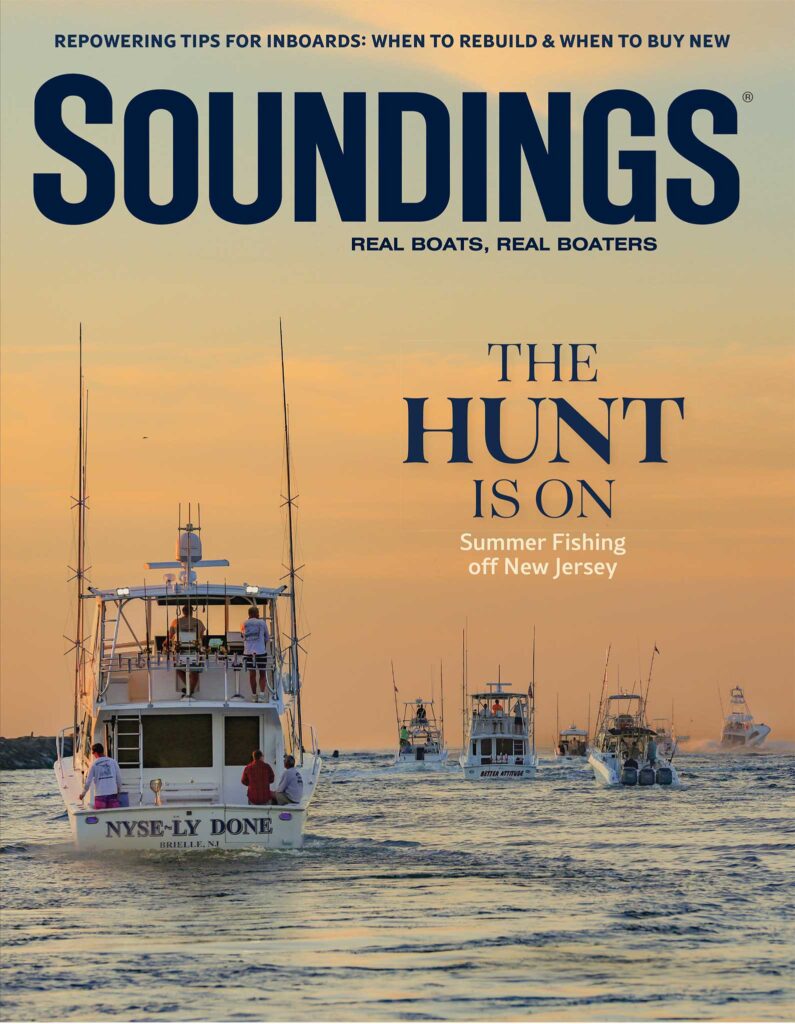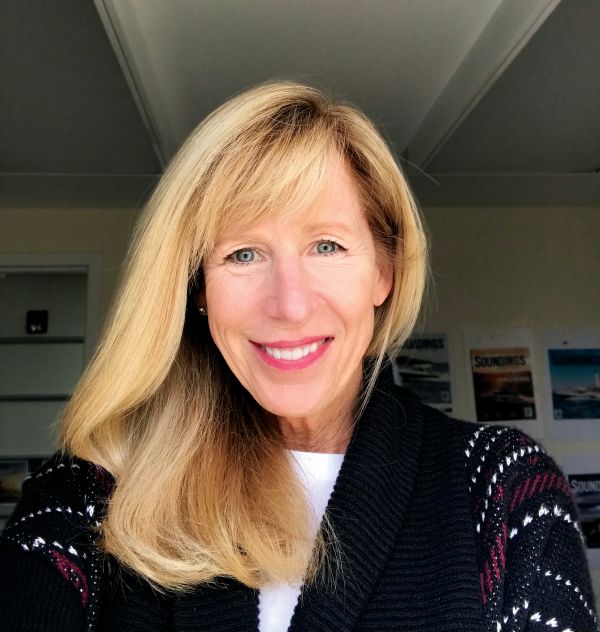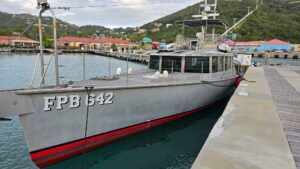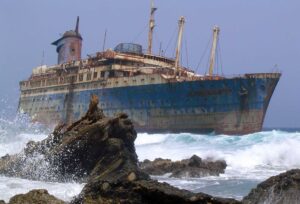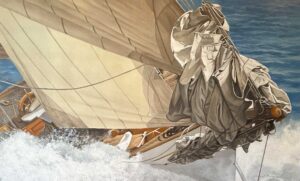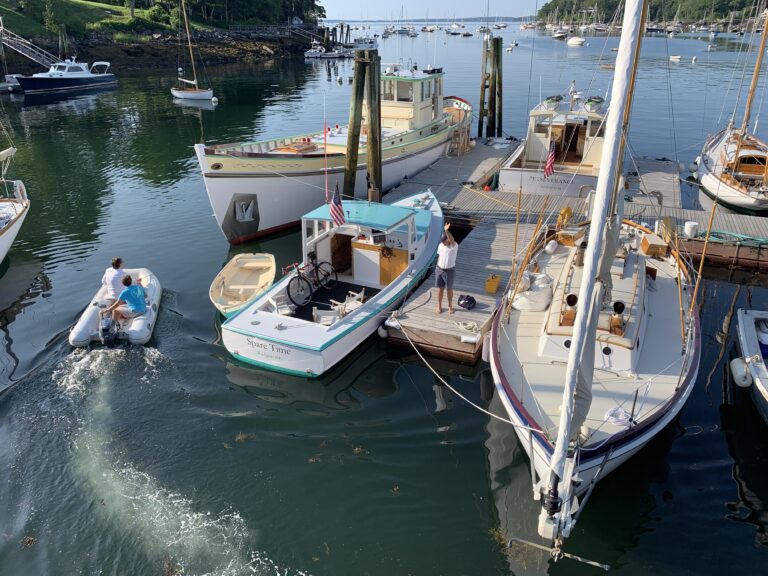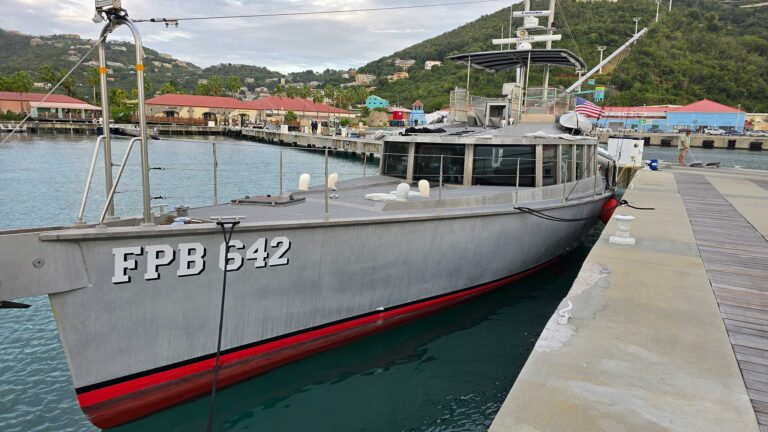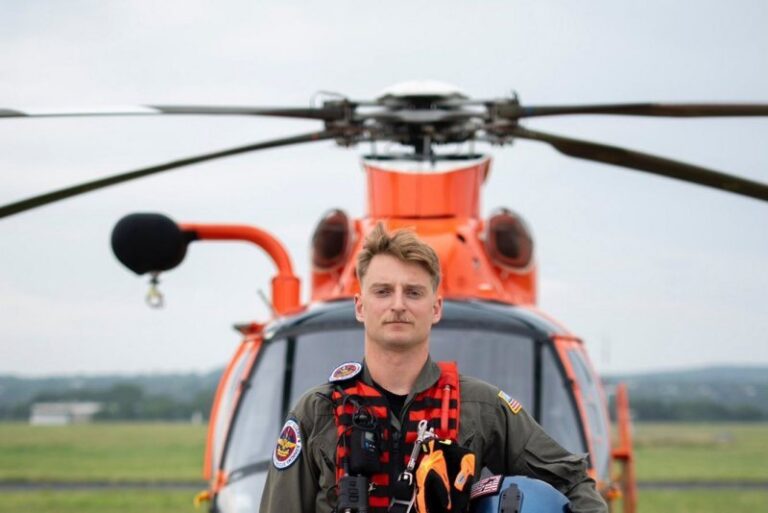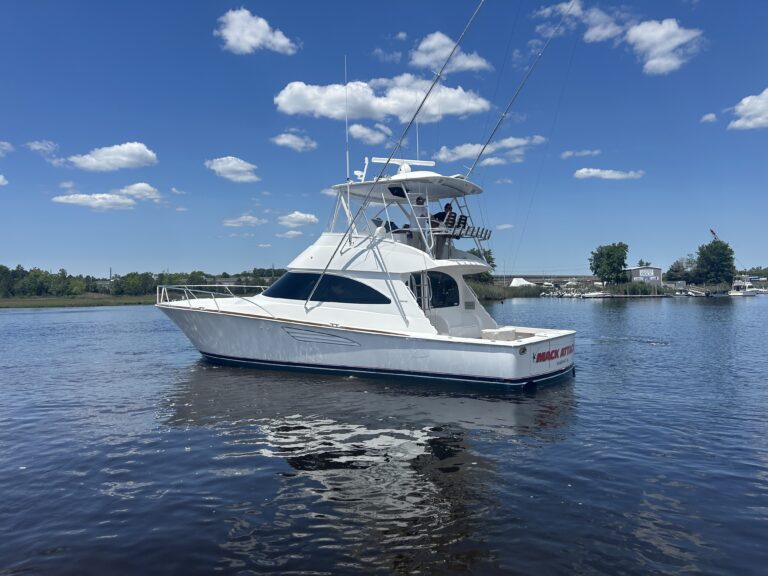Christian Carraway is in the cockpit of the Grady-White Canyon 386, a new model that’s been given center stage in the builder’s booth at the Fort Lauderdale International Boat Show. Carraway introduces himself as the product designer, the person responsible for the look and feel of the boat. “We have smart people on staff who figure out how to make it work—engineers and naval architects, the ones who understand math,” he deadpans. “But we work together, with a lot of negotiation and compromise.” The results of that collaboration? A boat that rises to the celebrated and salty reputation Grady-White has maintained for 65 years.
The Canyon 386 has big Topsiders to fill. It replaces the builder’s 376, a fishing boat with some cruising DNA that was in the company’s line for 12 years—two years past the typical 10-year life expectancy. Because the 376 had consistently maintained good sales over the years, Carraway and his colleagues initially began an update, but pivoted when the list of improvements started to look more like a major overhaul. “We realized it was time for a change,” he says. “So, we came up with the new 386, a boat that rises to the next level, in large part because a number of the elements have been pulled from our 456, the flagship of the Canyon series.”
The 386 rides on the same proven SeaV2 hull as the 376, but the deck is new. It makes good use of the boat’s 13-foot 2-inch beam. That gunwale-to-gunwale roominess is one of the first things I notice as Carraway gives me a tour.

“Anytime you redesign a boat, you have to make sure you maintain what the original model was good at,” he says. “The 376 was a great fishing machine. When we went to work on the 386, we asked ourselves, ‘Is it possible to make it better?’”
While the 376 had a single transom door for hauling in a catch, the 386 has two doors, to port and starboard, so if you’re fighting a fish, you don’t have to wrestle it over to one side. Grady-White also devotes the transom to the angler, with a pair of livewells flanking a big freezer box. There are also cutting boards, tackle storage and multiple rodholders nearby. “We had five in the cockpit of the previous boat,” says Carraway. “Now we have at least six places to stow rods near the stern. We simply don’t want to compromise the boat’s fishability. Geez, if we mess that up, we haven’t done any good.”
There’s attention to detail for anglers, but the 386 also acknowledges that some Grady-White owners have no interest in fish. They buy this brand for its ride and build quality, with no intention of dragging lines. Comfort is key, as are entertaining features. That explains the meal prep area in the cockpit, on the aft side of the lean bar. It has a grill and sink covered with a Corian counter. “We’re trying to find that balance where we can add these amenities without upsetting the fishermen,” says Carraway.
I’m surprised to learn that those features, and almost everything else on the boat, come standard. (Outriggers and enclosures are two of the few options.) The builder contends a complete list of standard equipment makes the buying process easier for the customer and allows the company to keep the retail price down, since it can plan inventory more carefully and distribute costs.

The retail price also includes a row of four seats at the helm—notable since three seats are more common on boats in this segment. All four are well-protected by the hardtop with sunroof, which means the passengers on the ends won’t feel they got short shrift, because wind and spray won’t ruffle their Ray-Bans.
The builder was able to make room for the extra seat by modifying the gunwales, bumping them out a couple of inches per side near the helm. Yet even with that extra seat, there’s plenty of room at the sidedecks to walk forward. Passenger safety and comfort is enhanced at the sidedecks with grabrails and coaming bolsters. “We didn’t skimp on anything,” says Carraway.
The helm seats face a dash with black carbon fiber and stainless steel details, 17-inch screens for electronics, and a steering wheel with grips on the front and back. The driver’s hands will spend a good deal of time on the joystick too, which operates a trio of 450-hp Yamaha outboards, the only power offered with the boat. The company says this package should yield a cruise speed in the low- to mid-30-mph range, and a top end near 60 mph.
The cabin on the 386 is a nice improvement from the 376. On the old boat, the entrance was from the side-deck, which is not always the most comfortable way to go below. Here, passengers descend from a door that faces aft. Inside, there’s at least 6 feet of standing headroom, a dining area that converts to a berth, a simple galley and—perhaps the best feature—a private head with separate shower. The builder managed to get a lot into the space, and yet it feels as if it can be comfortable for a few people over a long day.

Cabin styling is clean, with details pulled from the 456 such as LED lighting, off-white Ultraleather, stainless steel accents and solid teak. Taken as a whole, it’s a look that’s a bit more modern. “We wanted to elevate people’s expectations of the brand,” says Carraway. “We’re known as a conservative company design-wise, but in a good way. We don’t jump on trends and that’s why we have one of the highest resale values in the industry. The materials here will never go out of style.”
We move forward to the bow and as we stand there Carraway gives me a once over. “Okay, you have to sit here,” he says, pointing to the lounge seat on the forward end of the console. “It’s made for us long-legged people.” So, I sit. “Now slide your butt back and put your feet up,” he says. I do and am happily surprised to see that my ankles aren’t hanging over the edge of the cushion, which is what usually happens when I try to get comfortable in the bow of a boat. There’s good lumbar support at my back and contour in the seat bottom that’s designed to cradle. “If you’re out running at 40 mph, you won’t feel like you’re about to bounce out of this seat,” says Carraway.
In addition to that lounge, there are two settees forward, each with an electric backrest. Pop in a filler cushion to create a sunpad. Remove all cushions and you have a casting deck covered in Grady-White’s signature diamond non-skid, some of the best in the business.
“It’s the little things that add up to big things,” says Carraway. “Details can seem insignificant in the grand scheme of a project, especially on a boat this size. But in the end, the combination helps make our brand distinctive. We work at every detail and collectively it creates a big difference.”
Grady-White Canyon 386
LOA (w/o engines): 36’6”
Beam: 13’2”
Draft: 2’4”
Displ.(w/o engines): 14,950 lbs.
Fuel: 410 gals.
Power: (3) 450-hp Yamahas
This article was originally published in the February 2024 issue.

